The Roman Agora was built in the first century BC as the new commercial center of Athens. The most famous monument at the site is the Horologion or Tower of the Winds.
A new Agora
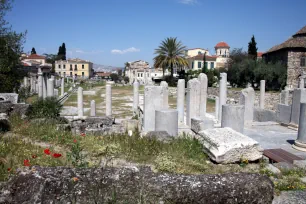
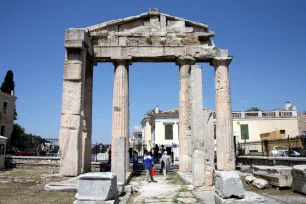
In the 1st century BC, when Athens had already become part of the Roman Empire, the Agora – the old marketplace of Athens – had become impractical for commercial activities. The Romans built a new forum, known as the Roman Agora or the Agora of Caesar and Augustus. In contrary to the Ancient Agora, it had a purely commercial character.
The Market
The Roman Agora was smaller than the Ancient Agora, measuring 112 meters by 96 meters (367 x 315 ft). It consisted of a large open space bordered on all four sides by colonnades with Ionic columns. Inside the colonnades were stores.
The marketplace had two entrances. On the west side was the Gate of Athena Archegetis, large propylaea built in 11 BC. From here a road led to the Stoa of Attalos at the Ancient Agora.
Another propylaea marked the east entrance. Little remains of this entrance gate.
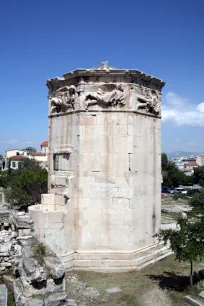
Tower of the Winds
The most interesting structure in the area is the Horologion of Andronikos Kyrrhestos, popularly known as the Aerides – Tower of the Winds. The octagonal tower, located just east of the Roman market, was constructed around 48 BC by the Syrian astronomer Andronikos Kyrrhestes. The tower has a height of over twelve meters (40 ft) and rests on a three stepped base.
The relief frieze at the top of the tower shows personifications of the eight winds, hence the name of the tower.
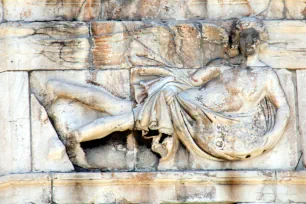
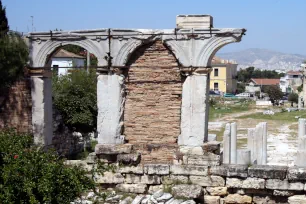
Below each relief was a sundial. Inside the tower was a complicated water clock, powered by a water stream from the Acropolis. On top of the tower’s conical roof stood a Triton-shaped weather vane. The Triton held a staff which pointed in the direction of the wind.
Other Buildings
Two more buildings have been discovered during excavations near the Tower of the Winds, including a building known as the Vespasianai, a public latrine with seating for 68 people on all four sides of the building.
There was hardly any privacy; at the time, latrines were public places used for socializing. Emperor Vespasian imposed taxes on the use of latrines, so they were named Vespasianai.
Another building on the east side, with a triple arched entrance, is so far unidentified. Initially it was thought this was the Agoranomeion – the headquarters of the market inspectors – but today it is thought it was possibly a temple dedicated to an emperor or deity.

